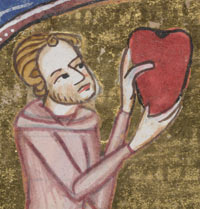 |
 |
 |
 |
 |
 |
 |
|
Byland Abbey: History
Byland Abbey: Buildings
|
Secret liaisons: from trial court to love-nest An interesting entry in the archiepiscopal records
of William Greenfield (1306-1315) suggests that the abbot of Byland
may have helped facilitate an illicit affair between Earl John
of Warenne (1286-1347) and his mistress, ‘the fair and comely’ Maud
Narford. Maud, it seems, was accommodated at the abbot’s house
at Clifton, just outside York, when John was attending parliament
at York. The archbishop of Canterbury had rejected John’s requests
for a divorce from Edward I’s grand-daughter, Joan, and forbidden
any illicit meetings with his mistress. John had thus turned instead
to the archbishop of York, William Greenfield, to release him from
his marriage. Greenfield instructed the bishop of Durham to deliver
a summons
to Maud to appear before him. The bishop was keen to point out
that this lay outside his diocese and was not, strictly speaking,
his duty; nevertheless,
he went to the abbot of Byland’s house at Clifton, where it was
said that Maud was staying. Upon his arrival at the house, the
bishop met several of the earl’s household attendants in the hall,
but was not permitted to see Maud. After a lengthy wait he gave
up and delivered
his citation in the presence of public notaries.(70) The large
manor house at Clifton was also used to hold Byland’s assize court,
to accommodate the royal household when parliament met at York, and
even, it seems,
to entertain Edward II (1307-27). The site is now occupied by a
Youth Hostel. |
